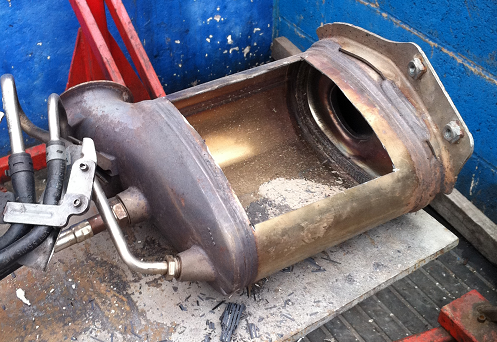
Image Source: Google
Diesel particulate filters (DPF) are designed to capture and store exhaust soot to reduce emissions from diesel vehicles. However, over time, these filters can become clogged, leading to decreased performance and potential mechanical issues. One solution to this problem is a DPF delete, which involves removing the filter from the exhaust system. This guide will provide you with tips and tricks for a successful diesel DPF delete.
Understanding Diesel DPF Delete
What is a DPF Delete?
- A DPF delete involves removing the diesel particulate filter from the exhaust system of a vehicle.
- By eliminating the DPF, you can improve exhaust flow, increase fuel efficiency, and potentially boost performance.
- It is important to note that DPF deletes are not legal in all areas and may void your vehicle's warranty.
Why Consider a DPF Delete?
- Improved performance: DPF deletes can help reduce back pressure in the exhaust system, leading to better engine performance.
- Increased fuel efficiency: Without the DPF, your vehicle may experience improved fuel economy.
- Clogged DPF replacement costs: Replacing a clogged DPF can be expensive, making a DPF delete a cost-effective solution for some vehicle owners.
Types of DPF Delete
Full DPF Delete
- In a full DPF delete, the diesel particulate filter is completely removed from the exhaust system.
- This type of delete offers the most significant performance improvements but may not be legal in all areas.
DPF Backpressure Sensor Delete
- Some vehicle owners choose to only remove the backpressure sensor associated with the DPF, allowing for increased exhaust flow without completely eliminating the filter.
- This type of delete may be a more moderate option for those looking to improve performance while maintaining some emissions control.
DIY vs. Professional Installation
DIY DPF Delete
- DIY DPF deletes can be risky and may void your vehicle's warranty.
- It is crucial to have a good understanding of your vehicle's exhaust system and emissions controls before attempting a DIY delete.
- Improper installation can lead to engine damage and may result in legal consequences.
Professional Installation
- For those not comfortable with performing a DPF delete themselves, professional installation is recommended.
- Professional installers have the knowledge and experience to safely and effectively perform a DPF delete on your vehicle.
- While professional installation may be more costly, it can provide peace of mind and ensure the job is done correctly.
Legal Considerations
Legalities of DPF Deletes
- DPF deletes are not legal in all areas and may violate emissions regulations.
- Removing emissions control devices such as the DPF can result in fines and penalties if caught by authorities.
- Before considering a DPF delete, be sure to research the legal implications in your region.
Off-Road Use Only
- Some DPF delete kits are explicitly marketed for off-road use only to avoid legal issues.
- If you plan to use your vehicle off-road or for racing purposes, an off-road use only DPF delete may be a viable option.
Maintaining Your Vehicle After a DPF Delete
Regular Maintenance
- After a DPF delete, it is essential to keep up with regular maintenance such as oil changes, filter replacements, and tune-ups.
- Proper maintenance can help ensure that your vehicle continues to perform optimally after the delete.
Monitoring Performance
- Keep an eye on your vehicle's performance after a DPF delete to identify any potential issues that may arise.
- Changes in fuel economy, engine noise, or exhaust emissions could indicate a problem that needs to be addressed.
Legal Compliance
- Ensure that your vehicle remains compliant with local emissions regulations even after a DPF delete.
- Regularly check for updates to emissions laws in your area to avoid any legal issues.
Conclusion
While a diesel DPF delete can offer performance and efficiency benefits for your vehicle, it is essential to consider the legal implications and maintenance requirements before proceeding. Whether you choose a full DPF delete or a more moderate option, such as a backpressure sensor delete, make sure to weigh the pros and cons carefully. If you are not confident in performing a DPF delete yourself, seek out a professional installer to ensure the job is done correctly. By following the tips and tricks outlined in this guide, you can make an informed decision about whether a DPF delete is right for your diesel vehicle.




